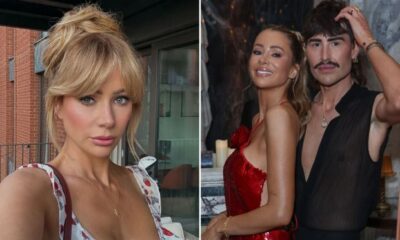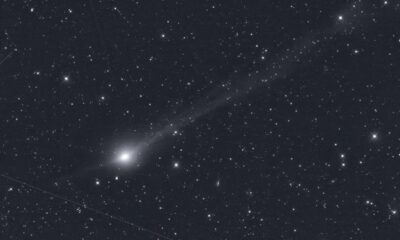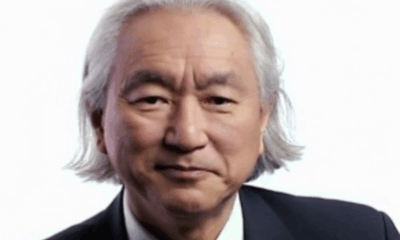Science
Earth Gains New Quasi-Moon: Astronomers Discover 2025 PN7

In a remarkable discovery, astronomers have identified a new celestial body accompanying Earth, designated as 2025 PN7. Found during the Pan-STARRS survey at the Haleakala Observatory in Hawaii in August 2024, this object is classified as a quasi-satellite, making it appear like a second moon while it orbits the Sun.
Quasi-satellites, as explained by the research team in the Research Notes of the AAS, are not gravitationally bound to Earth. They follow a resonant orbit that allows them to maintain a loose proximity to our planet. The team notes, “Here, we present the newest member of this class, 2025 PN7.” This classification indicates that while 2025 PN7 seems to orbit Earth, it is, in fact, a small asteroid following a solar orbit.
The new quasi-moon is estimated to measure around 18-36 meters in diameter, comparable in size to a typical building. Its presence adds to the growing list of quasi-moons, a category of celestial bodies that have attracted attention for their unique orbital characteristics. According to astronomer Carlos de la Fuente Marcos, interviews from Live Science suggest that 2025 PN7 may have been orbiting Earth for decades, possibly even centuries.
Despite its proximity, 2025 PN7 does not exert significant gravitational pull like Earth’s natural satellite. Quasi-moons are independent entities, loosely influenced by Earth’s gravity. This connection is temporary, typically lasting for decades or longer, until these bodies eventually drift away from Earth’s gravitational influence.
Challenges of Detection
The discovery of 2025 PN7 highlights the challenges astronomers face when tracking small celestial objects. Its modest size makes it difficult to observe with amateur telescopes. Advanced telescope models can only detect such quasi-moons when they are in close proximity to Earth.
Another astronomer noted the difficulty of identifying such objects, stating, “Based on what little we know so far, it’s almost certainly a rocky and natural object.” Distinguishing between natural asteroids and artificial satellites is crucial, especially as some man-made debris can also find itself in similar orbits.
NASA has projected that 2025 PN7 will continue its orbit alongside Earth until approximately 2083. However, until the object detaches from Earth’s gravitational influence, precise predictions about its future trajectory remain elusive.
The discovery of 2025 PN7 not only enriches our understanding of celestial mechanics but also offers a unique opportunity to study a small asteroid over an extended period. Such investigations can yield insights into the composition and behavior of near-Earth objects, contributing to the broader field of planetary science. As astronomers continue to monitor this and other quasi-satellites, they hope to unravel more of the mysteries surrounding our solar system.
-

 Entertainment3 months ago
Entertainment3 months agoAnn Ming Reflects on ITV’s ‘I Fought the Law’ Drama
-

 Entertainment4 months ago
Entertainment4 months agoKate Garraway Sells £2 Million Home Amid Financial Struggles
-

 Health3 months ago
Health3 months agoKatie Price Faces New Health Concerns After Cancer Symptoms Resurface
-

 Entertainment3 months ago
Entertainment3 months agoCoronation Street’s Carl Webster Faces Trouble with New Affairs
-

 Entertainment3 months ago
Entertainment3 months agoWhere is Tinder Swindler Simon Leviev? Latest Updates Revealed
-

 World2 weeks ago
World2 weeks agoBailey Announces Heartbreaking Split from Rebecca After Reunion
-

 Entertainment4 months ago
Entertainment4 months agoMarkiplier Addresses AI Controversy During Livestream Response
-

 Entertainment2 weeks ago
Entertainment2 weeks agoCoronation Street Fans React as Todd Faces Heartbreaking Choice
-

 Science1 month ago
Science1 month agoBrian Cox Addresses Claims of Alien Probe in 3I/ATLAS Discovery
-

 Health4 months ago
Health4 months agoCarol Vorderman Reflects on Health Scare and Family Support
-

 Entertainment4 months ago
Entertainment4 months agoKim Cattrall Posts Cryptic Message After HBO’s Sequel Cancellation
-

 Entertainment3 months ago
Entertainment3 months agoOlivia Attwood Opens Up About Fallout with Former Best Friend





















